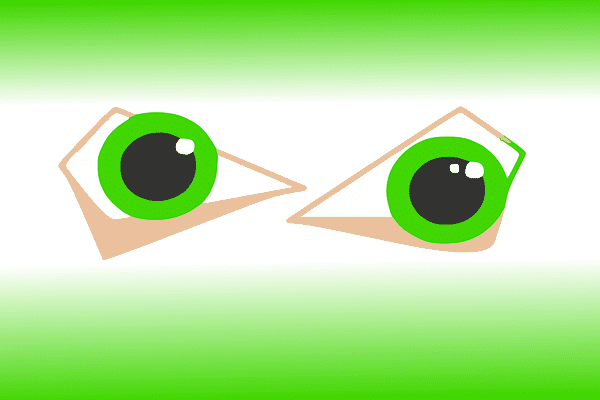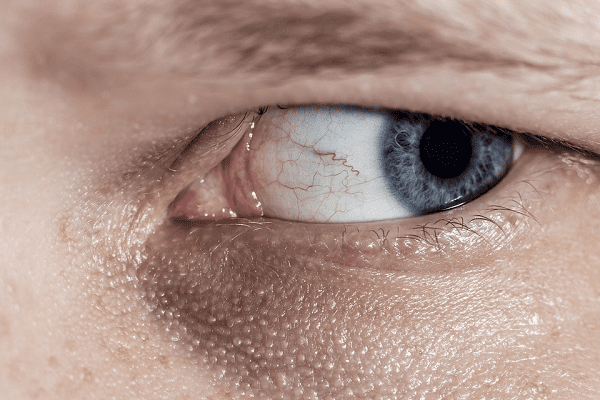Ophthalmology >>>> Divergent strabismus - signs and treatment options
Divergent strabismus - signs and treatment options.

Disorders of the visual apparatus in many cases are not visually noticeable, which complicates the timely appointment of treatment. But there are pathologies of the eye apparatus that are visible to the naked eye, which makes it possible to correct and correct violations in time. Such visually noticeable pathologies include divergent strabismus (exotropia).
It is impossible not to notice the symptoms of this pathology, since the wrong location of the eyeballs immediately attracts attention, one of which (and often both) is turned to the side (outward). This disease has different pathways of origin: it occurs both as an intrauterine pathology and in the form of acquired pathology - a side effect of a number of diseases. There can be many reasons for the development of divergent strabismus: intrauterine or postpartum infections, disorders of the central nervous system, microtrauma and genetic characteristics of fetal development, but the essence of the disease is the same - a violation of the muscles that rotate the eyeball.
Considering that of the six muscles that control the movement of the eyeball, only two muscles rotate it left-right, then the pathology, accordingly, concerns precisely these eye muscles. But often divergent strabismus can be aggravated by disturbances in the work of the other four muscles that rotate the eyeball up or down. Then the rotation of the eyeball is displaced sideways and slightly upward or sideways and slightly downward. In any of the listed cases of visible pathology, the eyeballs are not symmetrically located, which becomes noticeable with any eye movement.
The signs of divergent strabismus are so obvious that the diagnosis is not in doubt, the ophthalmologist can only clarify the reasons that led to such a change and prescribe adequate treatment.

Divergent strabismus, as a rule, is detected at an early age (infancy) and requires certain corrective measures. But due to the fact that pathology is treated by wearing glasses with various optical technologies and exercising on simulators, infancy is not very suitable for starting the treatment of the disease.
The doctor begins to study the causes that led to the disruption of the oculomotor muscles, prescribes physiotherapy, drug therapy or surgical correction of the pathology. But the correction with the help of glasses is carried out at the age when the child is able to wear such glasses deliberately. Divergent strabismus can be of various modifications and may be mild or severe. If both eyeballs are involved in the pathology, signs of divergent strabismus manifest themselves as the impression that the child is not looking at the object, but somewhere in the other direction, although his face is turned towards the object. If the pathology affects one of the eyeballs and manifests itself in an implicit (mild) form, it seems that the child is turning his face as if he is trying to examine the object from the side. Thus, he tries to direct the squinting eye towards the object he is looking at.

Divergent squint is very detrimental to the quality of vision, disrupting the picture of perception of surrounding objects. Since a person has binocular vision, which provides a three-dimensional perception of objects, viewing an object with one eye makes its shape spatially flat and forms incorrect impressions of the world around. In addition, the image of the object in question is doubled. The consequences of such distortions are developmental disorders of the child, making him mentally disabled in the eyes of others, although in fact his mental abilities may be normal and even outstrip the intelligence of his peers, but misconceptions about the world create a different impression. It is for this reason that the treatment of divergent strabismusit is necessary to start as early as possible, not hoping that the child will outgrow this pathology. Untreated divergent squint causes myopia, headaches, and loss of learning opportunities.
How is divergent strabismus treated? To make the muscle that turned the eyeball in the wrong direction to work, the designs of the glasses are made taking into account the increased load on the turned eye, thus forcing the muscle to turn it in the right direction. For these purposes, glasses are closed for viewing the lens from the side of the healthy eye, and the entire visual load automatically falls on the pathologically working muscle. This treatment can last up to three weeks.
Medication and physical therapy are used to target the fibers of the eye muscle, causing them to contract in the correct manner. For the correction of divergent strabismus, special simulators have been developed, regular exercises on which develop the eye muscle that has unfolded the wrong eyeball.
If before the age of five, medicinal, physiotherapeutic and apparatus methods do not bring the desired success, surgical intervention is prescribed in order to correct the oculomotor muscles. In the conditions of laser and radiosurgery, when the intervention in the tissues of the ocular apparatus is minimally invasive (less traumatic), the process of postoperative rehabilitation of the patient does not last long (up to a week) and is usually not combined with severe side effects.
Divergent strabismus is a disease that can be cured by modern methods, which should lead the parents of a child suffering from this pathology to the idea that in order to prevent the development of complexes in the child, outwardly unaesthetic appearance and difficulties in adaptation in society, it is worth contacting an ophthalmologist as early as possible.
Divergent strabismus can also develop in an adult against the background of infectious diseases, neurological diseases, trauma or the common cold of the eye muscle. And in these cases it is possible to correct vision with modern developments in the field of ophthalmology. Launched divergent strabismus that has passed into adulthood is also amenable to correction. You need to know about this in order not to miss your chance to become a healthy person.

Read

Read


























